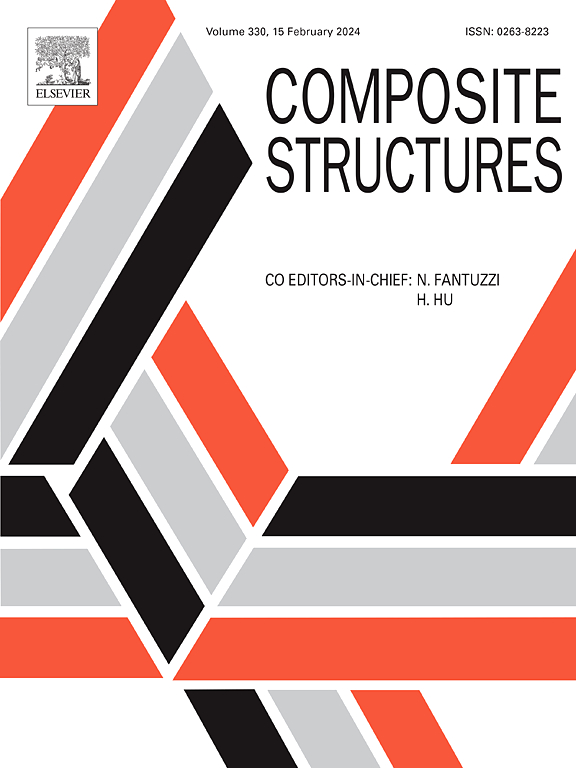Programmable multilayer metasheets: 3D shape-morphing through differential Poisson’s ratio mechanism
IF 6.3
2区 材料科学
Q1 MATERIALS SCIENCE, COMPOSITES
引用次数: 0
Abstract
This paper introduces an innovative multilayer metasheets deformation strategy that enables the deployment of two-dimensional (2D) flat materials into complex three-dimensional (3D) curved surfaces, leveraging the differential Poisson’s ratio mechanism. Based on the design principles, we initially designed and established an analytical model for multilayer metasheets concept. Finite element simulations are then utilized to investigate the impact of varying Poisson’s ratio characteristics among different layers at the unit cell level on the curvature and mechanical characteristics of the metasheets. Building on this unit cell characteristic research, we further explored the potential of metasheets in deploying general curved surfaces through in-plane combinatorial design methods, and developed a more precise shape inverse design approach for deformable metasurfaces constructed from multilayer metasheets. We verify the 3D curved surface deployment mechanism of metasheets concept through a series of quasi-static tensile experiments, which present a good agreement with our simulation results. Finally, this paper further discusses the potential applications of the multilayer metasheets concept. The multilayer metasheets concept offers a fresh perspective for introducing mechanical metamaterial into the 3D shape-shifting techniques, broadening the path for the application of curved surface deployment in more general engineering scenarios.
可编程多层元表:通过微分泊松比机制的三维形状变形
本文介绍了一种创新的多层元片变形策略,利用微分泊松比机制,可以将二维(2D)平面材料部署到复杂的三维(3D)曲面上。根据设计原则,我们初步设计并建立了多层元表概念的分析模型。然后利用有限元模拟来研究不同层之间的泊松比特性对元片曲率和力学特性的影响。在此基础上,我们进一步探索了元片在平面内组合设计方法中部署一般曲面的潜力,并开发了一种更精确的由多层元片构建的可变形元表面的形状逆设计方法。我们通过一系列的准静态拉伸实验验证了元片概念的三维曲面展开机理,结果与仿真结果吻合较好。最后,本文进一步讨论了多层元表概念的潜在应用。多层元片的概念为将机械超材料引入3D变形技术提供了一个全新的视角,拓宽了曲面部署在更一般工程场景中的应用路径。
本文章由计算机程序翻译,如有差异,请以英文原文为准。
求助全文
约1分钟内获得全文
求助全文
来源期刊

Composite Structures
工程技术-材料科学:复合
CiteScore
12.00
自引率
12.70%
发文量
1246
审稿时长
78 days
期刊介绍:
The past few decades have seen outstanding advances in the use of composite materials in structural applications. There can be little doubt that, within engineering circles, composites have revolutionised traditional design concepts and made possible an unparalleled range of new and exciting possibilities as viable materials for construction. Composite Structures, an International Journal, disseminates knowledge between users, manufacturers, designers and researchers involved in structures or structural components manufactured using composite materials.
The journal publishes papers which contribute to knowledge in the use of composite materials in engineering structures. Papers deal with design, research and development studies, experimental investigations, theoretical analysis and fabrication techniques relevant to the application of composites in load-bearing components for assemblies, ranging from individual components such as plates and shells to complete composite structures.
 求助内容:
求助内容: 应助结果提醒方式:
应助结果提醒方式:


